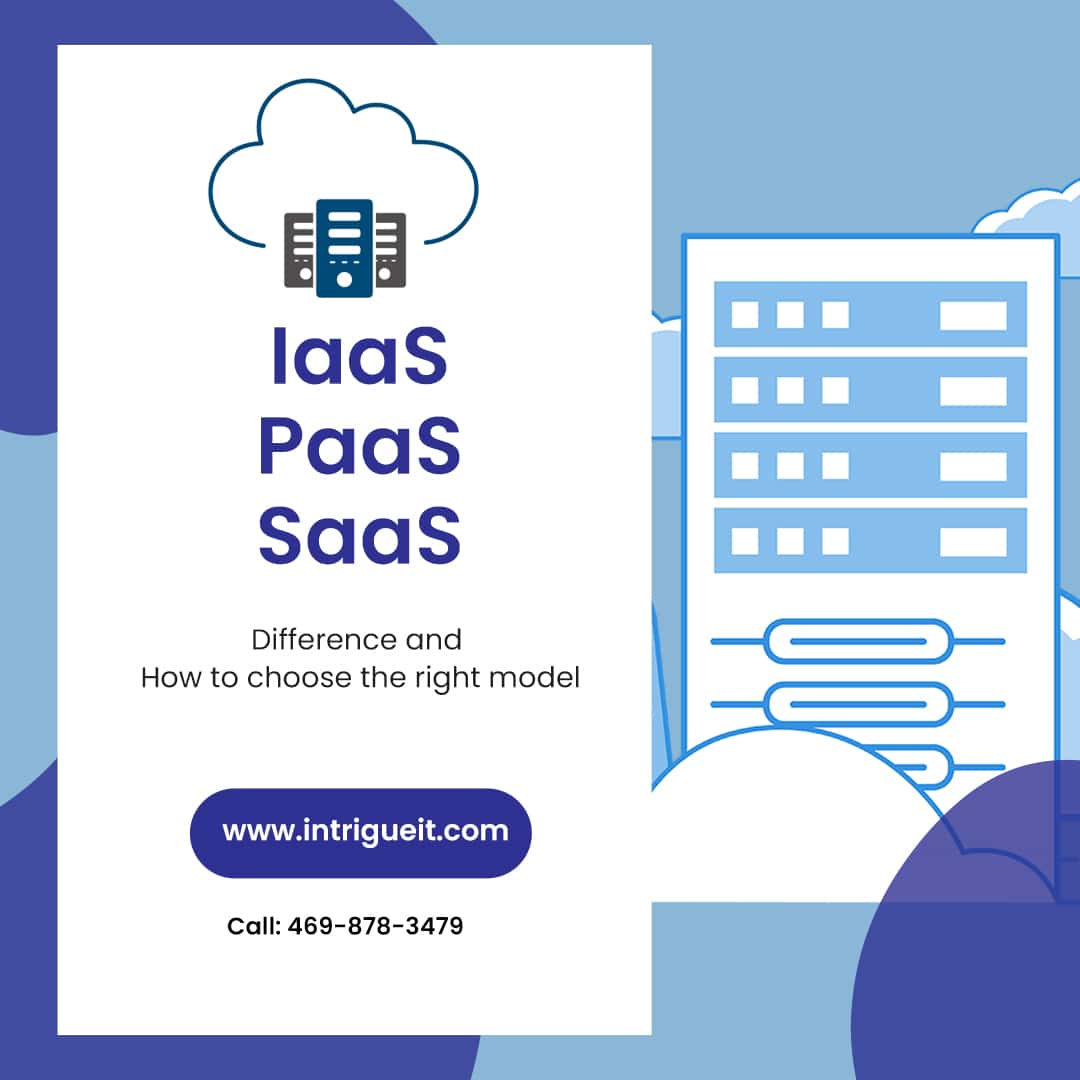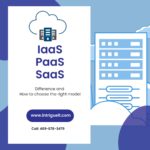IaaS vs. PaaS vs. SaaS - What’s the Difference and How to Choose the Right Cloud Services Model?
Nowadays, more and more organizations like operate in the cloud. What kind of cloud services they use depends on the task and budget. When moving your business to the cloud, it is important to understand the benefits of the various cloud services. We’ll cover the differences and what you need to consider when choosing a cloud services model. There are three most common service models:
IaaS
What is IaaS?
Infrastructure as a Service is the provision of computing resources over the cloud. As a ready-made solution, the client can choose: data storage, virtual server, operating system and the number of resources. IaaS is often used by those looking to eliminate the need to maintain their own on-premises data centers.
You don’t need to buy your own server hardware, since you rent it from an IaaS provider and receive it in a virtual form via cloud servers. They are delivered to organizations through a dashboard, such as VMware. It is a cloud-based digital platform that lets you run any program across multiple clouds across multiple devices. With this, you have complete control over the entire infrastructure and can customize according to your needs.
You can independently manage applications, operating systems and specialized software. Provider supports the operation of servers, storage systems and other physical equipment.
Benefits of IaaS
- IaaS is the most flexible cloud service model with a simple hardware deployment process.
- It enables enterprises to grow compute resources as needed, rather than buying expensive hardware for their own infrastructure.
- The cost of IaaS varies and mainly depends on the client’s CPU and RAM needs.
- It is also a cost-effective model due to the high scalability and automation of cloud services.
- IaaS services are relevant for startups and small companies as well as large businesses.
- Cloud services are an alternative to buying equipment and creating local infrastructure.
- As needs grow, companies are forced to implement new services and applications, which are aided by the flexibility of cloud services.
- In simple terms: migrating to IaaS saves time and money.
The most famous Examples of IaaS
PaaS
What is PaaS?
PaaS is platform as a Service that provides a customizable environment for developers. Customers gain access to a platform or toolkit for building applications over the online. With this service, developers can create everything from simple mobile applications to complex business software.
PaaS Benefits
- Like other cloud services, PaaS allows customers to use modern, powerful development tools that are supported by the provider.
- The great thing about Platform as a Service is that it’s ready to go right away.
- PaaS accelerates application development, testing, and delivery.
- It will be easier and more economical for a development team to implement projects of any size and complexity on a ready-made platform.
- The main thing is that it will cover the costs of deploying the platform and middleware.
- Cloud technologies allow you to increase / decrease resources as your need.
- Several users can access a project through the same platform, which in turn can work with different web services and databases.
Who is PaaS for?
PaaS solutions help companies of all sizes streamline their development process. For example, PaaS can make it easier for a large development team to work on the same project.
This option may be preferable for companies with existing IT infrastructure. Customers will need their own IT staff to use and configure the PaaS platform software, but in return, the organization will have greater control over the development process and the subsequent flexibility of delivering the finished application to customers.
The most famous examples of PaaS
SaaS
What is SaaS?
Software as a service (SaaS) is the provision of pre-configured programs to customers for various business tasks over the online. CRM, ERP, Accounting, HRM systems, task trackers and other software can be provided as SaaS solutions.
SaaS Benefits
- Remote, configuration and maintenance of the software by the provider gives the customer more time to solve other important issues and tasks.
- These solutions are centrally managed and hosted on a remote server. The provider is responsible for configuring the required hardware and software, not the user.
- In most cases, SaaS does not require downloading and installing software on the device – most programs run in a browser.
Who is SaaS for?
The use of SaaS services is beneficial for companies that do not have the opportunity to buy on-premise solutions. Large companies can use this model for short-term projects that require quick, simple, and affordable solutions.
Also, the services of this model are suitable for customers who need an application accessible via online, including from a mobile device.
SaaS provides solutions for different tasks. For example:
- CRM systems help automate the company’s interaction with customers.
- ERP systems help optimize enterprise resource management.
- Accounting helps to maintain all the financial issues.
The most famous examples of SaaS
Conclusion: Which Cloud Service Model to Choose?
Each cloud model offers specific features and capabilities. When a business has a set of specific tasks and an understanding of the benefits of different types of cloud services, it is easier to choose the right one.
Once again, we mentioned above all the major advantages of each of the models:
While these models look similar at first glance, SaaS, PaaS, and IaaS provide different levels of service. However, in any case, cloud solutions take the burden off customers and help save time, employee effort and money.
The cloud is the future of technology for business development. Another important thing is that, you must concern about to choose the right managed IT services provider to get the best cloud services model.
Read more “Reasons Why Companies Need Managed IT Services”.










14 Responses
Very nice post. I just stumbled upon your blog and wished to say that I have truly enjoyed browsing your blog posts. After all I will be subscribing to your rss feed and I hope you write again very soon!
Great content! Keep up the good work!
naturally like your website but you have to take a look at the spelling on several of your posts. Several of them are rife with spelling issues and I find it very troublesome to inform the truth on the other hand I’ll surely come back again.
Hello. Great job. I did not imagine this. This is a great story. Thanks!
Good – I should definitely pronounce, impressed with your site. I had no trouble navigating through all tabs and related information ended up being truly easy to do to access. I recently found what I hoped for before you know it at all. Reasonably unusual. Is likely to appreciate it for those who add forums or anything, site theme . a tones way for your client to communicate. Excellent task..
Its great as your other posts : D, regards for putting up. “You can’t have everything. Where would you put it” by Steven Wright.
It’s hard to find educated folks on this topic, however you sound like you recognize what you’re talking about! Thanks
I love it when people come together and share opinions, great blog, keep it up.
Hello! I just would like to give a huge thumbs up for the great info you have here on this post. I will be coming back to your blog for more soon.
Keep functioning ,great job!
wonderful post, very informative. I wonder why the other specialists of this sector don’t notice this. You should continue your writing. I am sure, you have a great readers’ base already!
I haven’t checked in here for some time since I thought it was getting boring, but the last few posts are great quality so I guess I will add you back to my everyday bloglist. You deserve it my friend 🙂
I have read several good stuff here. Definitely price bookmarking for revisiting. I surprise how a lot effort you set to make such a magnificent informative website.
Great post. I was checking constantly this weblog and I’m impressed! Extremely useful info specially the last part 🙂 I maintain such information much. I was seeking this certain information for a very lengthy time. Thank you and best of luck.